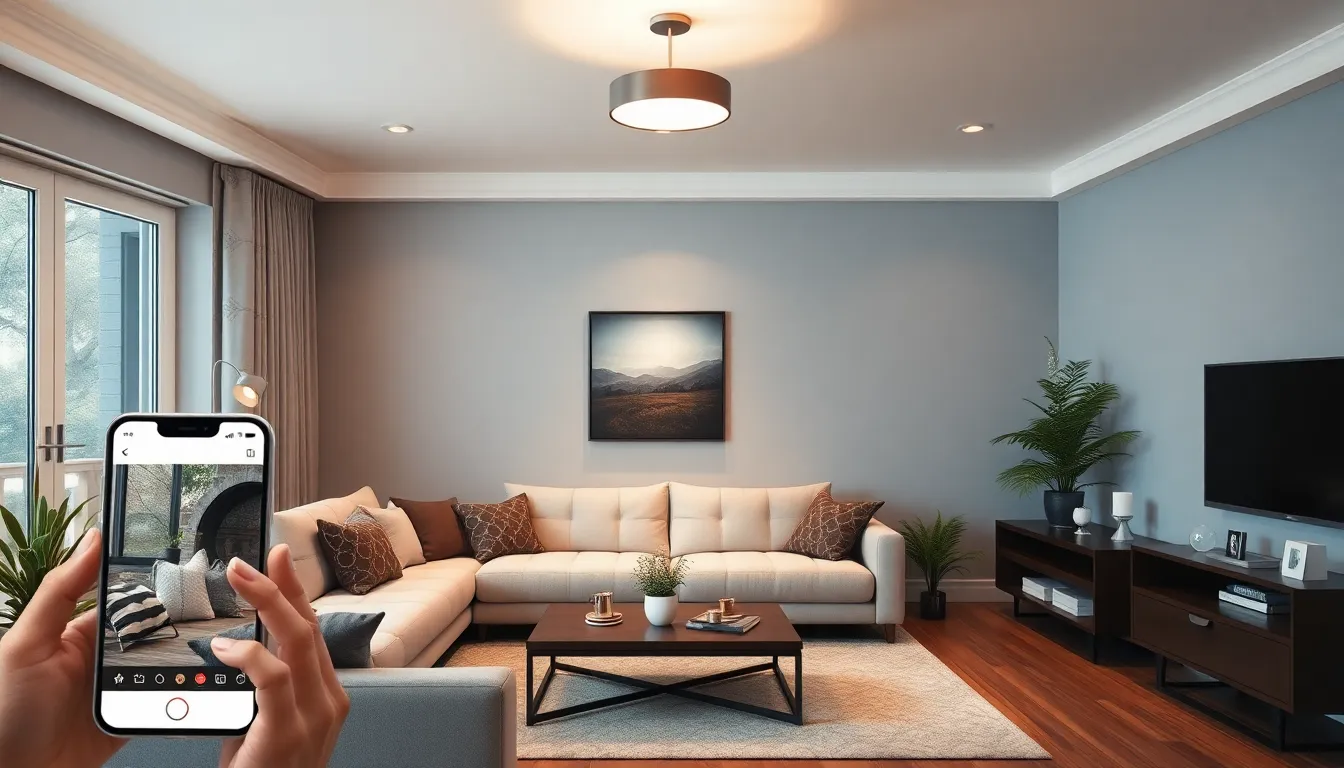Table of Contents
ToggleImagine walking into a room and your lights flicker to life like they’re excited to see you. Home automation lighting control systems do just that, transforming mundane moments into delightful experiences. Gone are the days of fumbling for switches in the dark or arguing over who left the lights on. With smart lighting, it’s all about convenience and a touch of magic.
Overview of Home Automation Lighting Control Systems
Home automation lighting control systems provide a seamless way to manage lighting throughout residential spaces. These systems integrate with various smart home devices, allowing users to control lighting remotely via smartphones or smart speakers. Enhanced functionality includes scheduling lights to turn on and off at specific times, creating a customized atmosphere for different occasions.
Various technologies support home automation lighting systems. For instance, Wi-Fi connectivity enables real-time control, while Z-Wave and Zigbee protocols facilitate communication between devices. Smart bulbs and switches form the core components, offering users flexibility in retrofitting existing homes or creating new installations.
User-friendly interfaces enhance accessibility, allowing multiple family members to manage lighting according to their preferences. Features like motion sensors or voice commands add convenience, automatically adjusting lights based on activity levels. Additionally, energy-efficient LED bulbs integrated into these systems significantly reduce electricity consumption, translating to cost savings over time.
Home automation lighting control systems enhance security. Automated lighting schedules mimic occupancy patterns, deterring potential intruders. Furthermore, compatibility with security systems ensures that outdoor and indoor lights respond to triggers, such as alarms.
Many manufacturers offer cloud-based solutions, enabling remote monitoring and management even when users are away. Data analytics also provide insights into lighting usage patterns, allowing for more informed decisions on energy consumption. In summary, home automation lighting control systems combine convenience, energy efficiency, and security, significantly improving daily living experiences.
Benefits of Home Automation Lighting Control Systems

Home automation lighting control systems bring multiple advantages for enhancing daily life. Smart lighting not only simplifies routines but also significantly boosts energy efficiency and comfort.
Energy Efficiency
Energy efficiency stands out as a key benefit. Smart bulbs typically use LED technology, consuming up to 80% less energy than traditional incandescent bulbs. Automation systems allow users to set schedules for lighting, effectively reducing energy waste. Sensors detect motion and adjust lighting based on occupancy, ensuring lights turn off in empty rooms. Data analytics can also provide insights into usage patterns, enabling further optimization. By tracking lighting habits, individuals can make informed decisions to enhance energy savings.
Convenience and Comfort
Convenience defines the experience with home automation lighting. Individuals can control lights from anywhere using smartphones or smart speakers, eliminating the struggle to locate switches in dark rooms. Voice commands streamline interactions, allowing for a seamless transition in ambiance with simple requests. Additionally, customized settings can be created for various activities—movies, reading, or entertaining. This personalization enhances comfort, making each space more inviting. Integrating automation with other smart home devices amplifies comfort, creating a cohesive and easily manageable home environment.
Types of Home Automation Lighting Control Systems
Home automation lighting control systems come in various types, each offering unique features for efficient and convenient management of lighting in homes. These systems enhance the experience of smart living, providing flexibility and control.
Smart Bulbs
Smart bulbs represent the forefront of lighting technology. These energy-efficient LEDs connect directly to home Wi-Fi networks, allowing for remote commands using smartphones or voice assistants. Users can customize brightness and color options via compatible apps. Additionally, smart bulbs support automation schedules, enabling lights to turn on or off at specified times. They often integrate with other smart home devices, providing seamless control. Studies show smart bulbs consume up to 80% less energy than traditional options, making them an optimal choice for sustainability-conscious homeowners.
Wall Switches and Dimmers
Wall switches and dimmers simplify the transition to home automation. Standard light switches become smart by replacing them with compatible options. These innovative switches control multiple lights at once, enhancing efficiency. Dimmers allow for adjustable brightness levels, catering to different moods and activities. Many models offer app-controlled features, enabling users to set schedules or modify settings remotely. Compatibility with smart home ecosystems offers further convenience, leading to a cohesive and integrated lighting control experience.
Motion Sensors and Timers
Motion sensors and timers contribute significantly to automated lighting strategies. Motion sensors detect movement within designated areas, activating lights when someone enters a room. This feature promotes energy savings by eliminating the need to manually control lights. Timers allow for scheduled lighting, providing illumination at predetermined times. Homeowners can combine both technologies for enhanced security, ensuring lights mimic occupancy patterns when away. These solutions offer practical applications for both security and efficiency, making them essential components in home automation lighting systems.
Integration with Other Smart Home Devices
Home automation lighting control systems integrate seamlessly with various smart home devices. Such integration enhances user experience and convenience in daily activities. Smart speakers, for instance, enable users to control lighting through voice commands. This feature eliminates the need for remotes or switches, providing hands-free operation.
Smart hubs act as central control units. These hubs allow for synchronization between lighting systems and other smart devices like thermostats and security cameras. With routine settings, users can automate their home environments based on time or occupancy. For instance, lights can turn on automatically as the security system disarms.
Smart bulbs and switches often work together. Users can control multiple bulbs from a single switch, creating customizable lighting scenarios. Scheduling options enable lights to mimic occupancy patterns when homeowners are away. This strategy not only enhances security but also reduces energy consumption, aligning with energy efficiency goals.
Furthermore, sensors play a crucial role in this integration. Motion sensors activate lights when movement is detected, helping prevent dark areas in homes. Integrating these sensors with home automation systems adds another layer of convenience and safety. For example, lights can automatically illuminate hallways when someone enters.
Mobile applications facilitate remote management of home lighting systems. Users can adjust settings or turn off lights from anywhere with an internet connection. This capability improves energy efficiency and ensures lights aren’t left on unnecessarily.
The integration of home automation lighting control systems with other smart home devices fosters convenience, security, and energy efficiency. This interconnected approach creates a smarter, more responsive living environment for users.
Choosing the Right Home Automation Lighting Control System
Selecting an appropriate home automation lighting control system depends on several key factors.
Factors to Consider
Compatibility with existing devices plays a significant role in decision-making. Users benefit from ensuring their systems work seamlessly with smart speakers, hubs, and other automation devices. Ease of installation varies among products. Some require professional help, while others offer DIY options for convenience. Integration with mobile applications enhances usability, allowing users to manage lighting from smartphones or tablets. Scalability remains crucial; users may prefer systems that can expand as their smart home evolves. Cost is another consideration, as systems range significantly in price. Evaluating the total cost of ownership, including energy savings from LED technology, aids in making informed decisions.
Popular Brands and Products
Leading brands in home automation lighting control offer various innovative products. Philips Hue stands out for its extensive range of smart bulbs and flexible control options. Lutron provides reliable wall switches and dimmers, well-regarded for their user-friendly design. Ring offers motion sensors that enhance security alongside smart lighting solutions. Leviton features compatible systems with Z-Wave technology, ensuring excellent connectivity with other smart devices. Furthermore, Wyze smart bulbs deliver affordability without sacrificing quality. Users seeking customized solutions will find numerous options available across these brands, catering to diverse lighting needs and preferences.
Home automation lighting control systems represent a significant advancement in modern living. They not only simplify daily routines but also enhance energy efficiency and security. By integrating smart technology into lighting, users can enjoy unparalleled convenience and customization.
With options ranging from smart bulbs to motion sensors, there’s a solution for every household need. As these systems continue to evolve, their potential to transform home environments will only grow. Embracing this technology can lead to a more comfortable and energy-efficient lifestyle, making home automation lighting an essential consideration for anyone looking to upgrade their living space.







